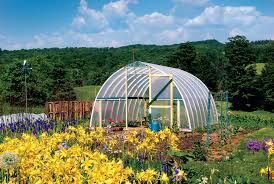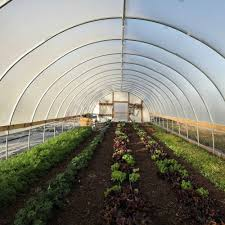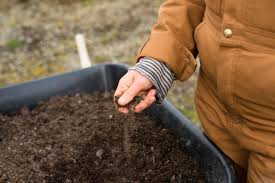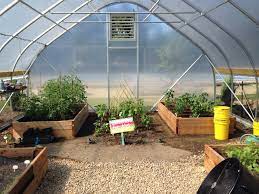As the cold weather sets in and your garden fades, are you longing for a way to keep growing fresh produce and flowers through winter? If houseplants don’t satisfy your craving for gardening, a hoop house might be the perfect solution. A hoop house, or polytunnel, extends the growing season and jump-starts your plants as temperatures warm.
In this article, we’ll explain what a hoop house is and share 11 tips to help you set up and use one effectively.
What Is a Hoop House?
A hoop house is a semi-permanent greenhouse made of steel tubing and covered with polyethylene plastic. This structure uses solar energy and natural airflow to maintain temperature, providing a warm growing environment for plants.
There are two main styles: half-round (similar to a Quonset hut) and peaked (like a Gothic arch). The half-round type is more resistant to damage, while the peaked design offers more vertical space for larger plants.
Typically, hoop houses have roll-up sides or vent flaps for ventilation, helping regulate temperature and humidity levels. Basic hoop houses are movable, allowing for crop rotation and soil replenishment, but adding features like raised beds or irrigation makes the structure more permanent.

Products to Consider
Here are a few hoop house kits to consider:
- Amerlife Extra High Large Walk-In Tunnel Greenhouse
This 10×20-foot greenhouse has a sturdy galvanized steel frame, UV-resistant polyethylene cover, and is perfect for colder climates. - GrowIt Heavy-Duty 12×20 Walk-In Greenhouse
This kit includes a steel tube frame and triple-bonded UV-resistant cover with roll-up sides for ventilation, offering durability and optimal growing conditions. - High Tunnel Greenhouse Full Kit
This customizable kit allows you to choose between round or arch styles, with steel framing and UV-resistant polyethylene for a long-lasting setup.

11 Tips for Successful Hoop House Gardening
Here are essential tips to ensure your hoop house thrives:
- Avoid Treated Lumber
Use untreated wood for your structure to prevent chemicals from leaching into the soil and harming your plants. - Check Zoning Laws
Some regions require hoop houses to be anchored in concrete. Be sure to check local regulations before you build. - Choose a Full-Sun Location
Ensure your hoop house gets ample sunlight for optimal plant growth. Avoid placing it near tall trees or structures that cast shadows. - Double Insulate in Cold Climates
Consider adding a second layer of polyethylene and an inflation fan to improve insulation, snow load capacity, and reduce condensation. - Install Polyethylene on a Warm Day
Install the plastic covering on a warm, windless day to ensure a tight, smooth fit. The plastic will shrink as the weather cools, ensuring a snug covering. - Use Passive Ventilation
Use natural ventilation techniques, such as roll-up sides or ridge vents, to help regulate temperature and humidity without electricity. - Orient North to South
Position your hoop house so the doors face north and south to ensure maximum sunlight exposure and minimize wind damage. - Provide Optimal Light Exposure
Use UV-treated, light-diffusing polyethylene to provide consistent light to all parts of your plants. Diffuse light is better for photosynthesis and overall plant health. - Remove Snow Gently
When snow accumulates on your hoop house, remove it carefully using a soft snow rake to avoid puncturing the plastic. - Sow Appropriate Plants
Choose plants suited for your region’s temperature range. Cool-season crops like spinach and lettuce thrive in hoop houses during winter, while warm-season plants like tomatoes and peppers do best in spring and summer. - Prepare the Soil
Before building your hoop house, test and amend your soil to ensure proper drainage and fertility. A well-prepared garden bed will lead to healthier plants.

Final Thoughts
Now you’re equipped with all the essential knowledge to build and maintain a hoop house. Whether you choose a simple, passive setup or a more complex system with raised beds and irrigation, a hoop house can extend your growing season and give you fresh produce year-round. By following these tips, you’ll be well on your way to a thriving garden, no matter the season.
